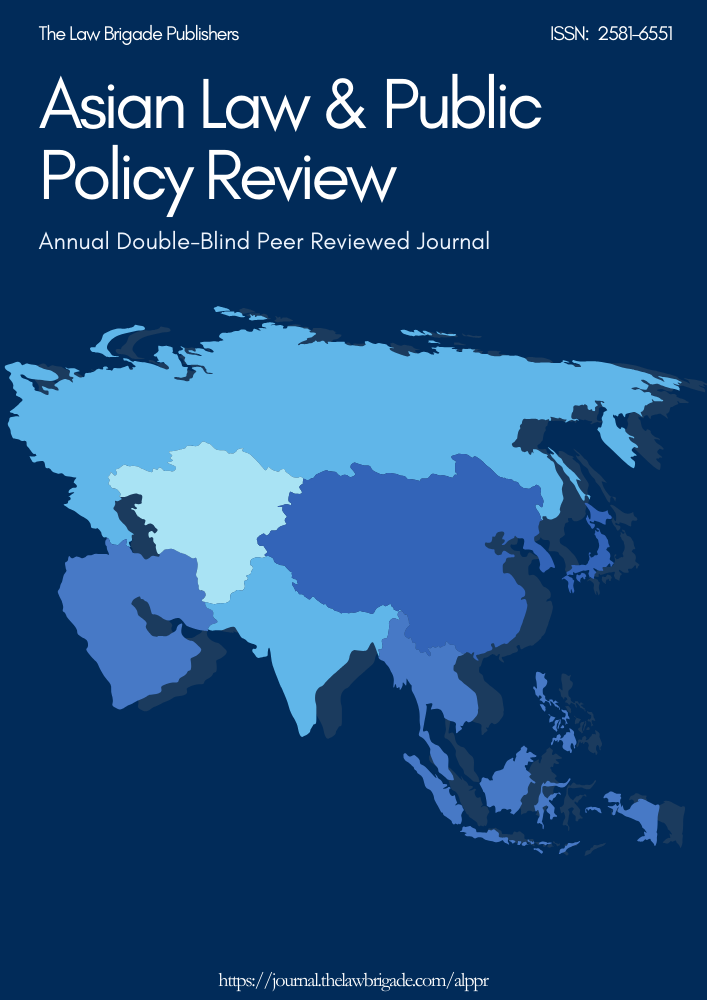WHEN EXISTING LEGAL SYSTEM MEETS NEW INTELLECTUAL PROPERTY RIGHTS: CHALLENGES AND COUNTERMEASURES
Keywords:
intellectual property rights, technologies, economyAbstract
As the world enters the era of knowledge economy, the importance of intellectual property rights is further enhanced, and the relationship between intellectual property rights and economic development is closer than ever before. As the “core asset” of high-tech enterprises, intellectual property has replaced tangible assets as the main form of social wealth. From the perspective of global trade, the value content of intellectual property rights has occupied an absolutely dominant position in the total market value. Some scholars even believe that intellectual property is the first property right.iAt present, a new round of scientific and technological revolution and industrial reform are booming, scientific and technological innovation has entered an unprecedented intensive and active period, and new technologies, new products and new business models continue to expand legal boundaries. Traditional rights have derived many new specific rights issues in the new era. New economic and social relations promote the increasing number of new intellectual property rights, which requires the addition of new members in the power family.
Downloads
References
i See Liu Chuntian, ‘Intellectual Property as the First Property Right is A Discovery in Civil Law’ (2015) 10
Intellectual Property, p 8.
ii See Li Chen, On the Systematization of Intellectual Property Law (Peking University Press 2005), pp 171-172.
iii See Frederick Abbott et al, International Intellectual Property Law in the Era of World Economic Integration,
Wang Qing (tr.) (Commercial Press 2014), pp 904-905.
iv See Yao Jianzong, ‘On Emerging Rights’(2010) 2 Legal System and Social Development, pp 6-9.
v See Yu Zhiqiang, ‘Review and Future Construction of China's Sanctions System for Cyber Intellectual
Property Crimes’ (2014) 3 China law, p 169.
vi See Yao Jianzong and Fang Fang, ‘Several Issues in the Study of Emerging Rights’ (2015) 3 Journal of
Suzhou University (Philosophy and Social Sciences), p 52.
vii See Wu Handong, ‘The Development Trend of International Intellectual Property System and the
Development Path of China's Intellectual Property System’ (2009) 6 Legal System and Social Sevelopment, p
148.
viii See Sam Ricketson, The Berne Convention for the Protection of Literary and Artistic Works: 1886-1986
(Deventer: Kluwer 1987), p 81.
ix See John R. Thomas, ‘Liberty and Property in the Patent Law’ (2002) vol.39 Iss.3 Houston Law Review, pp
573-574.
x See James Boyle, ‘The Second Enclosure Movement and the Construction of the Public Domain’ (2003) Vol.
66 Nos. 1-2, Law and Contemporary Problems, pp 36-37.
xi See Guo He, ‘Legal Protection of Intellectual Property Rights of Semiconductor Integrated Circuits’ (2004) 1
Journal of Renmin University of China, p 107.
xii Directive on the Legal Protection of Databases.
xiii Article 2 of the Convention Establishing the World Intellectual Property Organization.
xiv Article 1 (2) of the TRIPS Agreement.
xv See Huang Wei, Interpretation of the General Provisions of the Civil Code of the People's Republic of China
(Law Press 2020), p 326.
xvi See Wu Handong, Zhang Ping, Zhang Xiaojin, ‘The challenge of Artificial Intelligence to the Legal
Protection of Intellectual Property Rights’ (2018) 2 intellectual Property, p 3.
xvii See Sun Shan, ‘Dilemma and Way Out of Copyright Law Protection of Artificial Intelligence Generated
Content’ (2018) 11 Intellectual Property, p 64.
xviii See Yi Jiming, ‘Is Artificial Intelligence Creating A Work’(2017) 5 Legal Science, p 144.
xix Beijing Intellectual Property (2016) Jing 73 Min Zhong No. 588 Civil Verdict.
xx See Zhou Hubin, Zhang Xianfeng, Dai Lei, ‘Introduction to the Revision of the Guide to Patent Examination’
(2017) 2 Patent Agency, p 4.
xxi See Yang Yanchao, ‘Research on the Creativity of Business Method Patents’(2016) 3 Patent Agency, 2016, p
29.
xxii See Yan Wenfeng, Sudan, ‘On the Challenge of New Business Forms to the Patent System’(2018) 5
Intellectual Property, p 87.
xxiii See Matthew G. Wells, ‘Internet Business Method Patent Policy’ (2001) Vol.87 No.4 Virginia Law Review,
p 770.
xxiv See Yang Yanchao (n 21)
Downloads
Published
Issue
Section
License

This work is licensed under a Creative Commons Attribution-NonCommercial-ShareAlike 4.0 International License.
License Terms
Ownership and Licensing:
Authors of research papers submitted to any journal published by The Law Brigade Publishers retain the copyright of their work while granting the journal specific rights. Authors maintain ownership of the copyright and grant the journal the right of first publication. Simultaneously, authors agree to license their research papers under the Creative Commons Attribution-ShareAlike 4.0 International (CC BY-SA 4.0) License.
License Permissions:
Under the CC BY-SA 4.0 License, others are permitted to share and adapt the work, even for commercial purposes, provided that appropriate attribution is given to the authors, and acknowledgment is made of the initial publication by The Law Brigade Publishers. This license encourages the broad dissemination and reuse of research papers while ensuring that the original work is properly credited.
Additional Distribution Arrangements:
Authors are free to enter into separate, non-exclusive contractual arrangements for distributing the published version of the work (e.g., posting it to institutional repositories or publishing it in books), provided that the original publication by The Law Brigade Publishers is acknowledged.
Online Posting:
Authors are encouraged to share their work online (e.g., in institutional repositories or on personal websites) both prior to submission and after publication. This practice can facilitate productive exchanges and increase the visibility and citation of the work.
Responsibility and Liability:
Authors are responsible for ensuring that their submitted research papers do not infringe on the copyright, privacy, or other rights of third parties. The Law Brigade Publishers disclaims any liability for any copyright infringement or violation of third-party rights within the submitted research papers.


